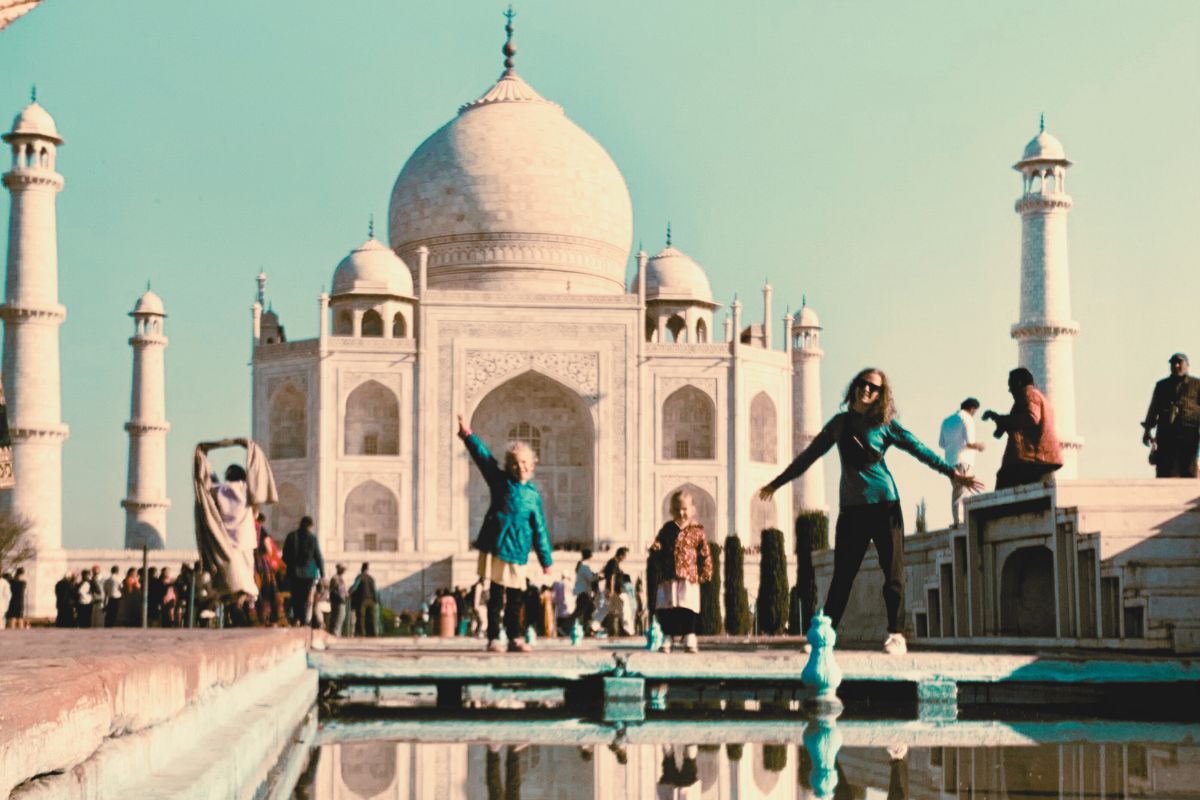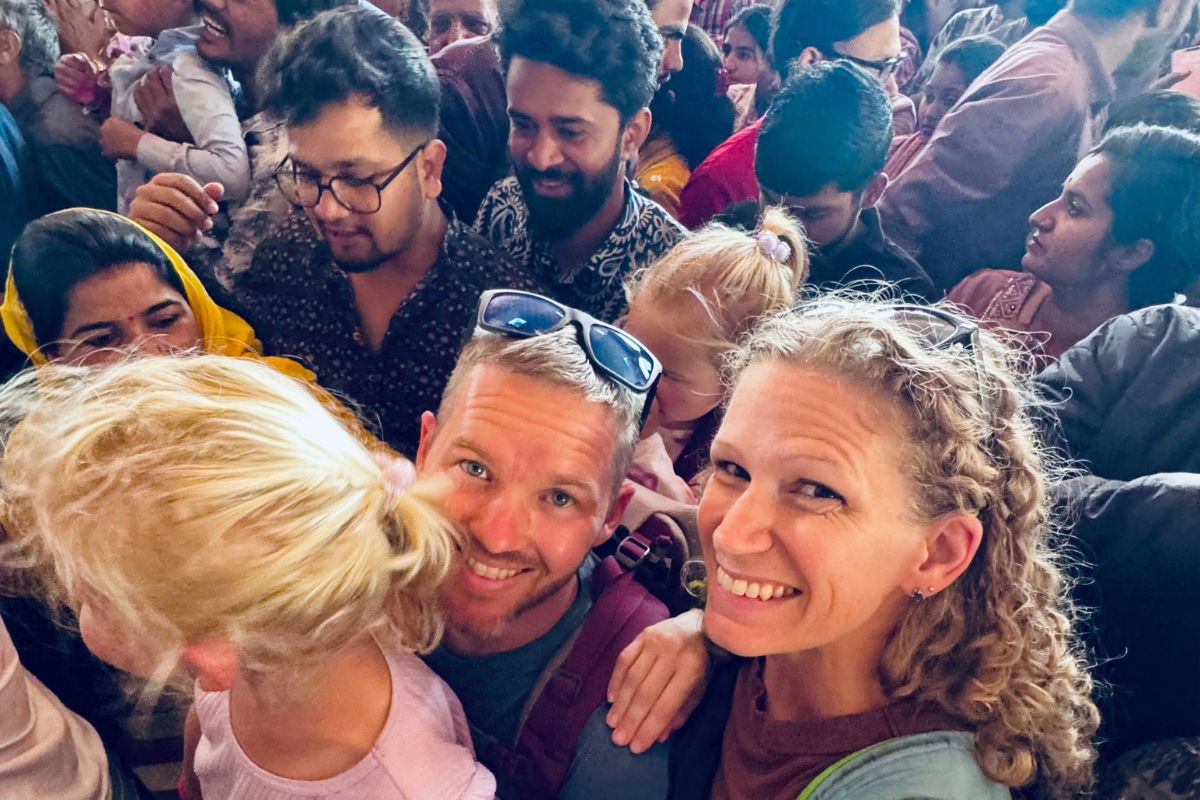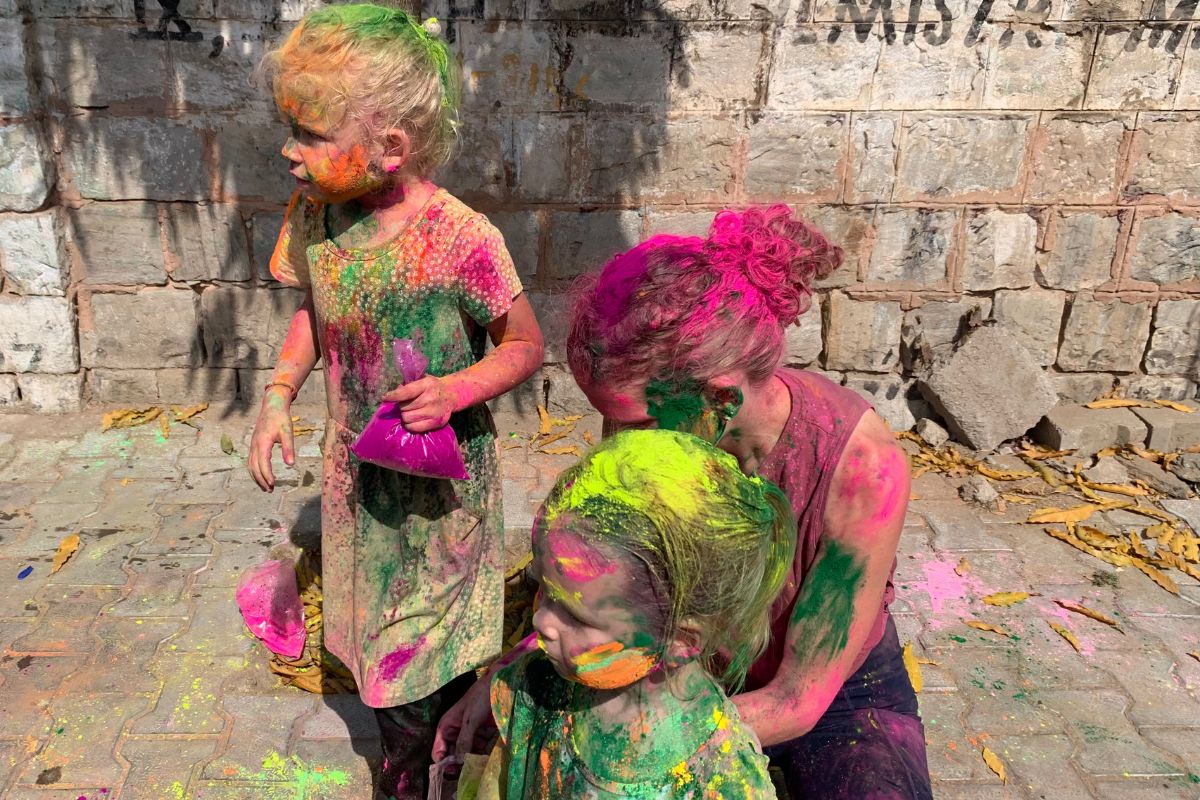Before we ever set foot in India, I honestly thought chai was just some fancy green tea with a lot of caffeine. It didn’t really appeal to me—it just wasn’t my thing. But that changed fast once we actually got there. What surprised me the most? People walking around with these metal canisters, pouring chai into tiny little cups. It looked kind of like coffee, but the smell? So spicy and rich. And once I took that first sip… wow. I had no idea what I was missing.
Our First Chai Moment (and Why I’ll Never Forget It)
The first time we tried real Indian chai was in this little art room in Rajasthan—Sanjuu Arts. We were sitting there with the kids, just soaking in the colors and vibe, when a chai seller came by with his metal container. He poured us these tiny cups—probably just a couple of ounces. It was warm, aromatic, and had this incredible mix of spice and sweetness. We all tried it and instantly looked at each other like, Wait… this is amazing.
From that point on, it kind of became a mission. I started scanning the streets for those metal cans. Was it tea? Was it coffee? I didn’t always know, but if it smelled good, I was in.
Chai IngredientsWhat’s Actually in Chai Tea in India?
So I did a little digging to figure out what exactly made that flavor so different. Here’s what makes traditional Indian chai (aka masala chai) stand out:
- Black tea – Usually a strong Assam tea base
- Cardamom – That warm, floral note you can’t miss
- Cinnamon – Adds some sweetness and depth
- Cloves – Earthy and bold
- Fresh ginger – Gives it a zing
- Black pepper – A hint of heat you barely notice but definitely feel
- Milk & sugar – Often boiled together with the tea and spices
It’s the combo of all of those that makes it taste nothing like any tea I’d had before. And yes, it does look like coffee in the cup, but nope—still tea.
The Metal Can Wins Every Time
We had chai in a few different settings: in homes, at roadside stalls, and straight from the vendor walking around. And I’ll be honest, there’s just something about the metal container version. It tasted better to me—more flavorful, a little sweeter. Our Airbnb host made it too, and that one was spicier, served in a bigger mug. It really comes down to preference—do you want more chai, or better-tasting chai in a tiny cup? Personally, I went for flavor.
Also, it’s super affordable. A cup was usually around ₹10 (that’s like 12 cents). Totally worth it.
Yes, Our Kids Drank It Too—And Loved It
Our kids—ages two and five—were all about the chai. We didn’t change anything for them. No extra milk, no less spice, no cooler temperature. They drank it exactly the way it was served and kept asking for more. We ended up finding a regular vendor just down the street from our Airbnb. He made it fresh several times a day, and it kind of became a daily ritual to walk down there mid-morning and enjoy a cup together. Honestly, it was such a sweet part of our time in India.
Chai Is Everywhere—And That’s the Magic
Chai isn’t just a drink in India. It’s something people share—on the street, on trains, in homes, everywhere. It’s how you welcome guests. It’s how you pause during the day. I didn’t sit my kids down and give them a full cultural explanation, but they could feel it. They noticed how this one little drink brought people together. And for us, it gave our family these quiet little moments—where we’d sit, sip, and just be together without any big distractions.
Where to Get the Best Chai in India (Hint: Skip the Cafés)
If you’re planning a trip and wondering where to try it—definitely go for the roadside stalls. Skip the fancy cafés. The best chai we had came from those little shops where the vendor makes it right in front of you. Fresh, hot, and full of flavor. You’ll often see people gathering there, which is a great sign. Our vendor would even hop on his moped to grab more ingredients—talk about dedication. If you are in Jaipur, click here for our free Google Maps Guide and you will find our Chai Shop.
And in case you’re wondering, no—we never felt unsafe drinking street chai. It’s boiled, clean, and not like someone’s sticking their fingers in it. It felt totally fine to drink, even with kids.
Bringing the Chai Ritual Home (Still Working on That One)
We haven’t tried making chai at home yet, but I’d love to figure it out. It’s one of those special memories I want to recreate. I’d have to find a solid recipe and give it a try—maybe even let the kids help make it so they can relive those India moments, too.
For Hesitant Parents: Let Them Try a Sip
If you’re a parent and wondering if your kids should try it—my advice? Let them. The cups are tiny (seriously, like a shot glass) and it’s a great way to introduce them to new flavors and cultures. It’s boiled, safe, and such a fun way to be part of the daily life around you.
Chai = Slow Moments Together
Stopping for chai wasn’t just about the drink. It gave us time as a family to sit down, talk, and just watch the world go by. Those little roadside breaks felt like mini resets—especially on busy travel days. We even made some friends at those stalls. It’s one of those small but meaningful things that became a highlight of our trip.
Final Thoughts: It’s Just a Cup of Tea… But Also So Much More
For us, chai became more than a drink—it became a symbol of quiet time, connection, and cultural discovery. It’s something we’ll always associate with India. And even though we’ve tried local drinks in other countries, nothing’s quite like chai from a metal can on the side of an Indian street.
If you’re headed to India with kids, don’t skip it. Get the chai. Share it. Savor it. And make it part of your family story.







